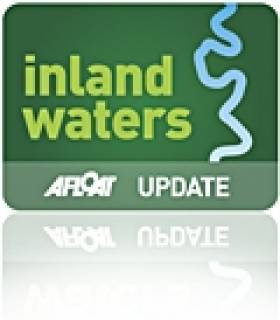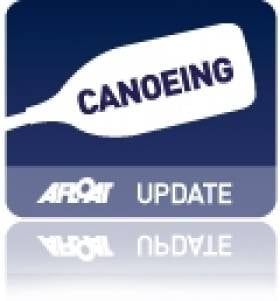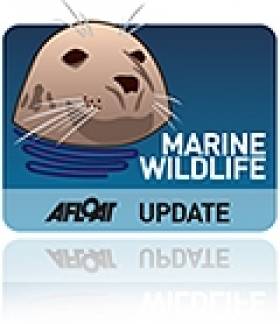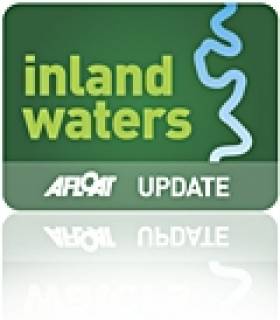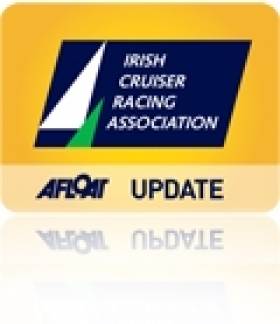Displaying items by tag: Kilkenny
Plans Lodged for Accessible Pontoon and Kayak Launch in Co Kilkenny
Kilkenny Live reports that Graiguenamanagh Canoe Club has lodged plans to construct an accessible floating pontoon and disabled kayak launch at The Quay on the River Barrow.
The application can be viewed on the Kilkenny County Council website and a decision is due in the new year by 24 January 2024.
Man On Raft Protests Kilkenny River Bridge Scheme
#Kilkenny - A Kilkenny man opposed the construction of a new road bridge over the River Nore in the city is entering the second day of his on-the-water protest, according to TheJournal.ie.
The protestor has erected a tent on his makeshift raft emblazoned with the words 'No CAS', in reference to the new Central Access Scheme for the city that some locals fear will bring more traffic into the medieval centre.
Yesterday the anonymous protestor told the same website that he launched his raft in an effort to obstruct preparatory works for the bridge scheme and provide a rallying point for other protestors to rally around.
Works were previously halted last week in the face of demonstrations, with some protestors entering the water by canoe to get in the way of construction workers.
TheJournal.ie has more on the story HERE.
Canoeing Clubs In Battle For Club Championships This April
#Canoeing - Experienced canoeing and kayaking enthusiasts from across Dublin city and county are bound for Kilkenny and the south east as the countdown has begun to the country’s first ever Canoeing Ireland Club Championships.
Over 400 competitors from 19 clubs across the country, among them athletes from the Wildwater Aqua Canoe Club in Lucan/Chapelizod, Lir Canoe Club, Rockhoppers and the UCD Canoe Club, have already registered for the two-day white-knuckle, adrenaline-pumping contest that will draw Ireland’s top watersports enthusiasts to Kilkenny city, to nearby Graiguenamanagh and Tramore in Waterford on 12-13 April.
A series of training weekends began on Saturday 1 February and as many as 80 competitors will be in the region every weekend up to the Club Championships, preparing for the all-island event.
The Canoeing Ireland Club Championships 2014 is also set to be a major revenue spinner for both Kilkenny and Waterford, and an amazing showcase event with hundreds more supporters, family members and friends expected to flock to the region for the inter-clubs competition.
The ultimate club will be crowned based on its athlete’s cumulated performances across all of the eight disciplines, which include a canoe slalom and wildwater racing in Clashganny; sprint kayaking and freestyle kayaking in Kilkenny city; and kayak surfing in Tramore.
The venue for the ultimate challenge, the White Water Kayak Race, will be confirmed closer to the event as weather will play a major role in finding the most testing waters for the spectacular event.
This will be an epic weekend not to be missed, according to Canoeing Ireland development officer Benny Cullen.
“Kilkenny was chosen due to its central location, its large variety of rivers in close vicinity to the city and its welcoming atmosphere,” he said.
“Organisations such as Kilkenny Recreation and Sports Partnership and Kilkenny Leader Partnership have done trojan work in the region to promote the sport, improve facilities and get more people active and out on the rivers.
“We are very grateful to all our supporters, particularly Great Outdoors, for their generous sponsorship.”
Cullen added that the championship “will also be a great spectator weekend and the best views of the events in Kilkenny city will be from the east bank of the Nore in Kilkenny, along Johns Quay between Green Street Bridge and Kilkenny Castle.
“Onlookers and supporters in Graignamanagh will have a bird’s eye view from the canal tow path at Clashganny Lock.”
Four More Drownings Bring Renewed Water Safety Appeal
#WaterSafety - Four more people have drowned in separate incidents around Ireland as the heatwave continues.
As RTÉ News reports, a 24-year-old man died while swimming in the sea near Ardara in Co Donegal yesterday afternoon (20 July).
Later, the body of a second victim was recovered from the Shrule River in Newtownstewart, Co Tyrone after getting into difficulty.
A third man in his 60s is was drowned after failing to return from a swim in a quarry near Carrick-on-Suir. His body was recovered earlier today.
The tragedies follow news of a 19-year-old who drowned while swimming with friends in Lough Leane in Killarney on Friday evening (19 July).
And a woman in her 30s was lucky to be rescued after getting into difficulty swimming in the River Nore near Kilkenny. She is currently in a serious but stable condition in hospital.
Irish Water Safety have renewed their appeal for the public to take extra care when taking to the water during this extraordinary hot weather that had already claimed seven lives as of Thursday last.
Paddlefest In Waterford & Kilkenny Next Month
#Canoeing - Canoeing Ireland is teaming up with the Canoe Association of Northern Ireland to host a joint Paddlefest in Waterford and Kilkenny on 6-7 April.
The conference centre at the HUB in Cillin Hill, outside Kilkenny, will be the centre of events for the weekend that Waterford Today says will feature competitions, workshops and "awe-inspiring displays" for canoeing, kayaking and paddling experts and novices alike.
Action on the waterways is open to all age groups and abilities, though with a focus on intermediate and advanced paddling skills.
Those taking part will be able to sign up for four workshops over the weekend hosted by top instructors and coaches.
More details of the weekend are available on the Canoeing Ireland website HERE. Registrations are open till this Friday 15 March so be sure not to miss out!
Seal Causes A Splash In Freshwater Lake
#MarineWildlife - The Irish Examiner reports that a seal has been spotted some 24km inland from the coast in the lakes of Killarney.
The rare sighting was made near Muckross Abbey last week by angler Mike O'Sullivan, who couldn't believe his eyes when he first spotted the marine mammal.
"People mix up seals and otters," he said. "But when I looked through ... binoculars it was a seal. In all my time on the lake, I never saw a seal.”
It's believed the common or harbour seal migrated to the inland lakes via the River Laune from Castlemaine Harbour.
And it's not the first time a seal has been spotted far from its usual habitat in these islands.
In January it was reported that a seal had travelled more than 80km from the Norfolk coast to the Fen Drayton lakes in Cambridgeshire. The Guardian has video of the intrepid explorer HERE.
First Phase of Thomastown River Project Complete
#INLAND WATERWAYS - The first phase of a project to restore the Thomastown river was launched at the weekend with the opening of a new weir, the Kilkenny People reports.
Fundraising efforts by the Thomastown Community River Trust have already led to the regeneration of the riverbank from the town up to Thomastown Viaduct.
The new causeway also forms part of a planned trail from Bennettsbridge to Inistioge.
The trust's project was "focused on using environmentally friendly and sustainable engineering", working in partnership "with a diverse range of groups from walkers to kayakers and anglers".
Work is already underway on the second phase that aims to see the restoration of the weir, which collapsed in 2008, as well as the sluice and mill wheel, in an effort to re-establish the swimming pond and fish pass.
The Kilkenny People has more on the story HERE.
Cruiser Racers Head for Royal Cork
Simon McGibney of WIORA confirmed there are already at least 15 boats interested in travelling to the event to join with the Cork, Kinsale and East coast boats. There is also the tantalising prospect of the fleet being joined by no less than ten quarter tonners from the UK who also plan to sail in the Sovereign's Cup at Kinsale the following week. Most of these British boats are crewed by professionals and will race with the Irish Class three fleet. They will, however, be scored separately and will receive a separate trophy.
Sailing with the Quarter Ton fleet will be Anchor Challenge, beautifully restored and modified by former owner Peter Morton, and now in the ownership of Eamon Rohan. At the weekend our spy spotted an all white gleaming boat wending its way up the Kinsale Road and wondered could this possibly have been Anchor Challenge and, if so, will we see a battle between the all black Tiger and the all white newcomer??
For the duration of the ICRA National Championships there will be subsidised launching at Ringaskiddy for all trailerable boats. In addition a very attractive accommodation package has been arranged for all ICRA competitors at the Carrigaline Court Hotel. They are offering three nights B/B plus one evening dinner from Thursday to Saturday and free B/B for Sunday night at €129 per person sharing.
A crew list has been set up by RCYC for skippers wishing to acquire crews with local knowledge and Race Officers for the event will be the hugely experienced Peter Crowley and Richard Leonard.
ICRA Commodore Barry Rose was delighted to inform the meeting that Yacht Designer Mark Mills has joined the ICRA committee where his expertise and wide knowledge will be greatly appreciated. Mark gave a most interesting report on recent developments re racing matters. One item referred to the fact that boats with bulb keels will now be more severely rated and another item of interest is discussion going on with regard to changing the rating bands for the 2012 Commodores Cup. It is believed there is a move afoot to lower the bands i.e. the current middle rated boat may be the big boat for the 2012 event.



























